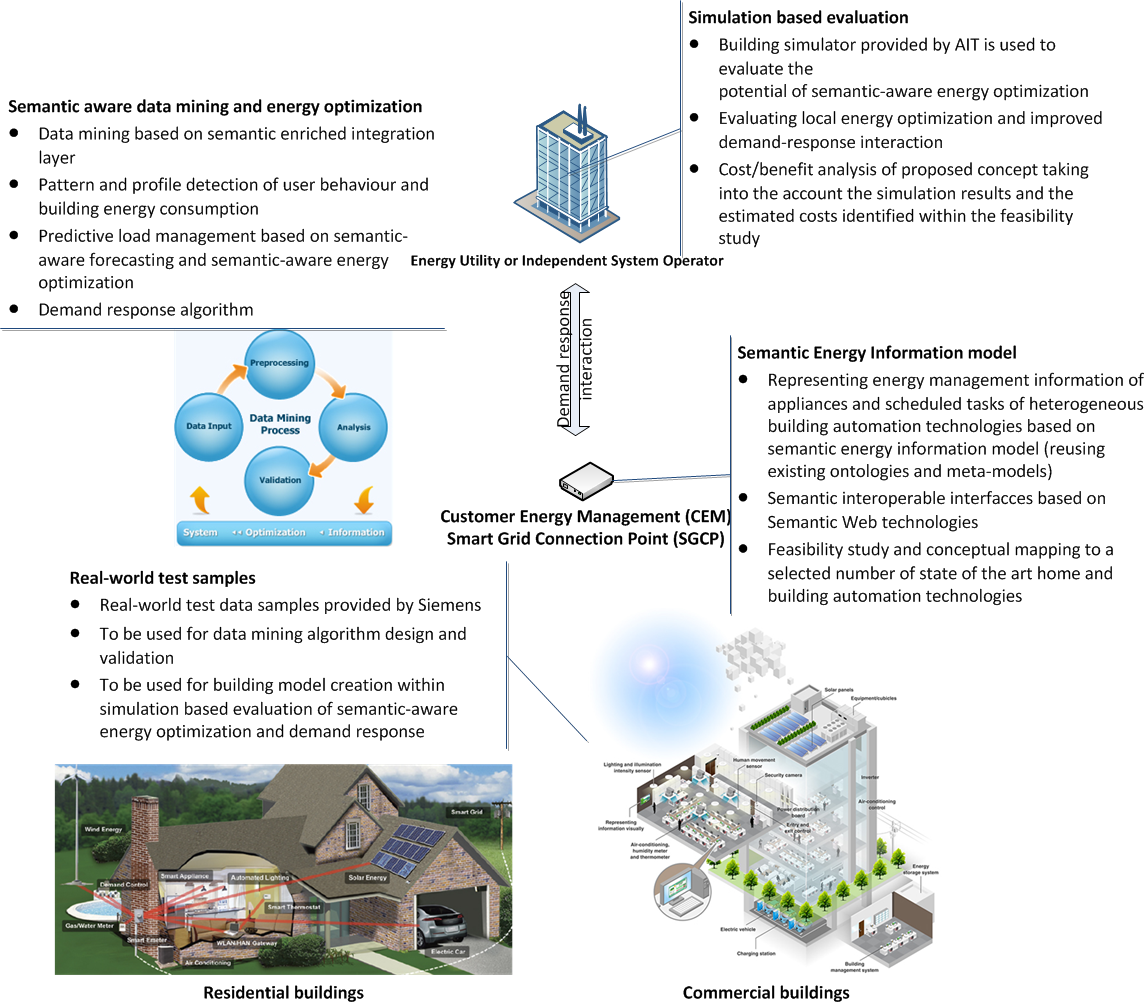Project results
The project goal is to investigate a novel semantic integration layer for heterogeneous home and building automation technologies with a focus on the requirements of energy management systems. For this purpose, a concept based on Semantic Web technologies is leveraged to ease the creation of energy management systems and the identification of potential load shifting capabilities in order to perform local load management and optimization but also to interact within a smart grid integrated demand response. Furthermore, the availability of enriched semantic information is used to create building usage profiles which are an input for the optimization algorithm that calculates the available load shifting potential or perform local energy optimization regarding a specified objective function. The capability of the energy management system information model is validated by developing an optimization algorithm that takes the input parameters from the provided information model and applies strategies for energy management. This includes the energy consumption of appliances and the schedule of tasks depending on the user comfort requirements. The developed optimization takes into account the dynamic nature of demand response in which pricing and flexibility signals can occur and lead to new input parameters for the optimization algorithm.
 |
The project results can be summarized as follows:
- A semantic integration based on an OWL ontology in the form of a semantic energy management system information model, which covers energy consumption pattern of appliances, scheduled tasks, priorities and comfort requirements, energy market information, and smart grid load information.
- A concept for an interoperable communication interfaces based on Semantic Web services based on the semantic energy management system information model.
- A protocol mapping between a select number of state-of-the-art home and building automation technologies and the novel interoperable communication interface.
- Data mining profiling algorithms that take advantage of the enriched semantics, providing more detailed building usage and energy consumption profiles. The local energy consumption as well as local energy production can be forecasted using forecasting models that incorporate the patterns of consumption and production.
- A formulation of an optimization problem and a semantic-aware optimization algorithm for balancing comfort and energy consumption based on manual user inputs, automatically derived energy consumption profiles, human comfort requirements and various objective functions (e.g. costs, preferred use of local production). The optimization algorithm tries to find a schedule of using the available resources in an efficient way while satisfying comfort needs of building users.
- Simulation-based evaluation of profiling and optimization based on simulations parametrized using sets of real world data and the semantic integration layer.
- A feasibility study on the hardware requirements for applying the semantic communication interface and a mapping of the proposed interface concept to a selected number of existing technologies.
- According to the cost/benefit analysis, the developed approach has an economic advantage compared to state-of-the-art automation systems. Although energy savings are not significantly higher than in other optimization approaches, the real benefit lies in the system configuration and reconfiguration based on the semantically enriched system(s) representation.
